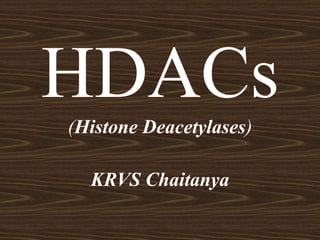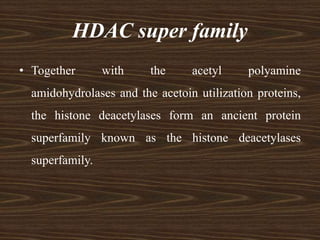Histone deacetylases (HDACs) are enzymes that remove acetyl groups from histone proteins, affecting DNA structure and gene expression by promoting tighter binding between histones and DNA. They are classified into four classes based on their structure and function, with class III being NAD+-dependent and distinct from others. HDACs have implications in various biological processes, including neurodegenerative diseases and cancer, leading to the development of HDAC inhibitors for potential therapeutic applications.






































